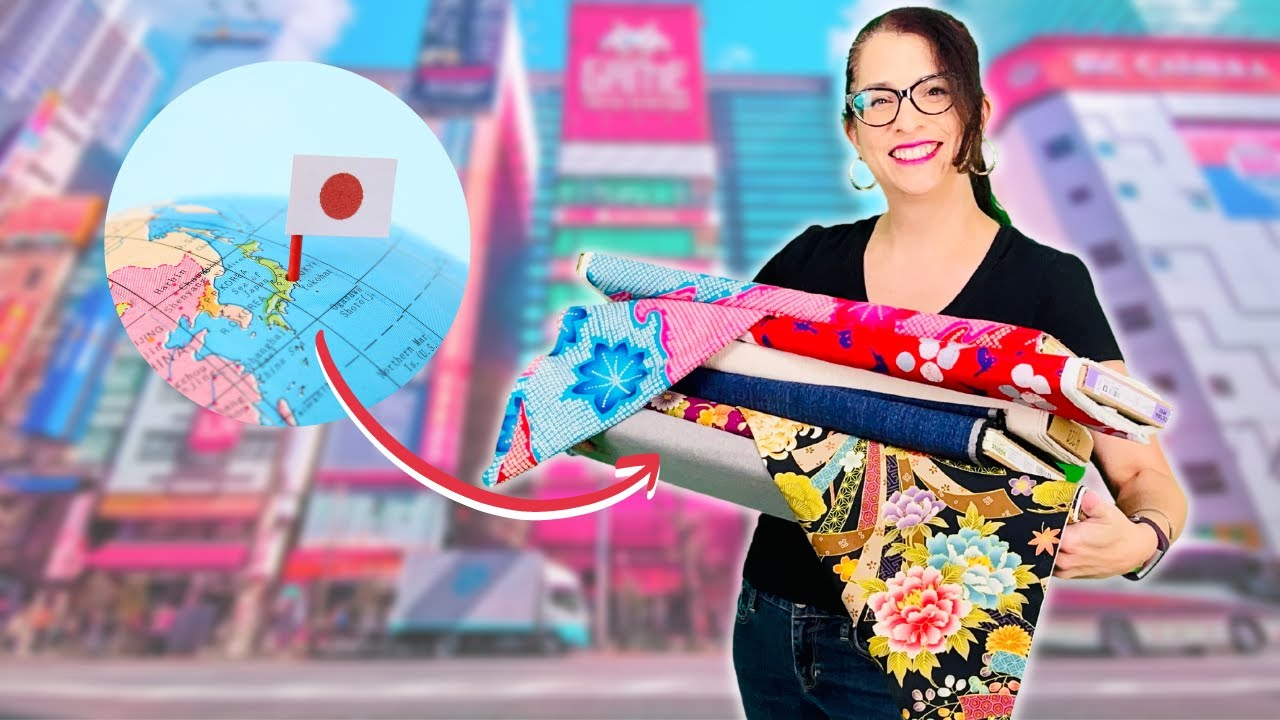Japanese print fabric is a mesmerizing blend of tradition and artistry, weaving a tale of rich cultural heritage and exquisite craftsmanship. With a history dating back centuries, these fabrics encapsulate the essence of Japan's vibrant and diverse culture. Each design is meticulously handcrafted, reflecting the delicate balance between nature and human ingenuity. Patterns inspired by cherry blossoms, waves, cranes, and other iconic symbols transport you to a world of beauty and tranquility. The textures are a sensory delight, ranging from soft and silky to crisp and structured, ensuring a tactile experience that is unmatched. Adorned with vibrant colors, these fabrics are a celebration of life, offering a visual feast that ignites the imagination. Whether used for clothing, home decor, or accessories, Japanese print fabric adds a touch of elegance and sophistication to any setting. The meticulous attention to detail and the commitment to preserving tradition make these fabrics a true work of art. Embrace the allure of Japanese print fabric and immerse yourself in a world of timeless beauty and cultural significance.

The Beauty and Tradition of Japanese Print Fabric
Japan is renowned for its rich cultural heritage, and one aspect that stands out is its traditional print fabric. With a history dating back centuries, Japanese print fabric, also known as Wagara, is a captivating art form that continues to be cherished and celebrated today.
A Glimpse into History
Wagara has a long and storied history, rooted in the Edo period of Japan (1603-1868). It was during this time that the art of woodblock printing, known as ukiyo-e, gained immense popularity. Artists such as Hokusai and Hiroshige created exquisite prints that depicted scenes from daily life, landscapes, and even mythical creatures.
These prints served as the inspiration for Wagara, which emerged as a textile art form in the 17th century. Initially, Wagara patterns were mainly used for kimono fabrics, but they soon found their way into various other aspects of Japanese culture.
The Symbolism and Significance
Wagara prints are characterized by intricate designs that often carry deep symbolism. Each pattern tells a unique story and holds significant cultural meaning. For example, the sakura (cherry blossom) motif symbolizes the transient beauty of life, while the koi fish design represents strength, perseverance, and good fortune.
These symbolic prints are not limited to fabrics alone. Wagara patterns can be found on various items, including ceramics, lacquerware, and even traditional Japanese architecture. They serve as a visual language that expresses Japanese aesthetics and values.
The Art of Creation
The process of creating Wagara involves meticulous attention to detail and skilled craftsmanship. Traditionally, woodblock printing techniques are used, where intricate designs are meticulously carved onto wooden blocks. Each color requires a separate block, adding complexity to the process.
Once the blocks are prepared, artisans apply carefully mixed pigments onto the carved surface and press it onto the fabric. This printing method allows for vibrant and precise patterns to be created, ensuring that every piece of Wagara is a work of art in itself.
Preservation and Modern Adaptations
While traditional Wagara continues to be treasured, there has also been a shift towards modern adaptations of this art form. Contemporary designers are incorporating Wagara patterns into clothing, accessories, and home decor, bringing a touch of Japan's rich cultural heritage to the modern world.
Furthermore, efforts are being made to preserve and promote the art of Wagara. Museums and galleries showcase stunning examples of traditional prints, and workshops offer opportunities for people to learn about the techniques and create their own Wagara designs.
Embracing the Beauty of Japanese Print Fabric
Wagara is more than just fabric; it is a visual representation of Japan's history and culture. Its intricate designs and symbolic meanings have captivated people around the world for centuries. Whether it's a traditional kimono or a modern accessory, incorporating Wagara into our lives allows us to embrace the beauty and tradition of Japanese print fabric.
So, the next time you come across a Wagara print, take a moment to appreciate the artistry and symbolism behind it. Let it transport you to the enchanting world of Japan and remind you of the enduring legacy of this captivating art form.
“Japanese Fabric Frenzy: A Love Letter from Japan”
Japanese Print Fabric
Japanese Print Fabric
Japanese print fabric, also known as “Wagara,” is a traditional textile art form that holds significant cultural and historical importance in Japan. It is characterized by its intricate patterns, vibrant colors, and meticulous craftsmanship. Let us explore some fascinating aspects of this unique fabric through the following table:
| Pattern Name | Meaning | Design Elements | Notable Examples |
|---|---|---|---|
| Asanoha | Literally translates to “hemp leaf.” It symbolizes growth and good fortune. | Interlocking diamond-shaped pattern resembling hemp leaves. | Famous for its use in kimono, especially for newborns, to wish them a prosperous life. |
| Sakura | Depicts cherry blossoms, representing the transience of life and beauty. | Elegant and delicate cherry blossom motifs, often painted in soft pastel colors. | Widely used in traditional garments, home decor, and accessories during the cherry blossom season in Japan. |
| Kikko | Meaning “turtle shell,” it represents longevity and good luck. | Hexagonal pattern resembling the shell of a turtle, often arranged in a grid formation. | Found in various textiles, including kimono and obi belts, as well as in traditional tea ceremony accessories. |
| Seigaiha | Translated as “blue wave of the sea,” it symbolizes good fortune and peacefulness. | Repetitive arching wave pattern resembling ocean waves, often in shades of blue. | Used in various fabrics, from clothing to interior design, to bring a sense of tranquility and serenity. |
| Ume | Depicts plum blossoms, symbolizing perseverance and hope. | Graceful plum blossom motifs in various stages of bloom, typically in shades of pink and white. | Often featured in kimono and other traditional clothing, as well as in decorative items during the plum blossom season. |
Japanese print fabric is not only visually captivating but also a reflection of Japan's rich cultural heritage. Each pattern carries a unique meaning and is deeply rooted in Japanese traditions. Whether used in clothing, home decor, or accessories, these fabrics add a touch of elegance and symbolism to any setting.

